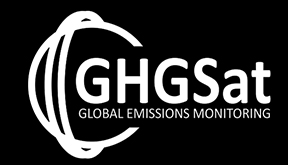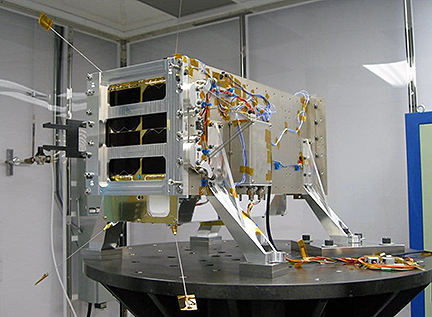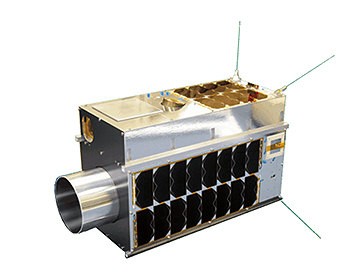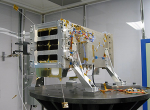
GHGSat has announced that the firm’s second satellite will be known as Iris — the naming follows a company tradition to name their satellites after the firm’s team’s children as a symbol of the importance of its mission to future generations

GHGSat’s GHGSat-D (“CLAIRE”).
Photo is courtesy of the company.
Iris is scheduled to be launched in August of this year and will carry an instrument that incorporates almost three years of lessons learned from flying GHGSat’s demonstration satellite Claire (GHGSat-D). Iris is expected to build on Claire’s success by making it possible to monitor even more sites, more frequently, at a fraction of the cost of other technologies.
The vast amount of unique data generated by Iris as a result of the smallsat’s increased sensitivity will be a cornerstone of GHGSat’s efforts to provide customers with actionable insights and solutions through proprietary analytics and machine learning algorithms. The resulting value-added products and services go well beyond the data, enabling GHGSat’s customers to make better decisions and manage their operations more efficiently.

GHGSat’s C1/C2 smallsat.
Image is courtesy of the company.
GHGSat’s second satellite Iris is one of two new satellites that the Canadian company plans to bring to market in the next 18 months as the firm quickly ramps up toward a full constellation. GHGSat’s third satellite, GHGSat-C2, is already in development and scheduled for launch in 2020. GHGSat is also preparing to fly its first aircraft sensor in the summer of 2019 to provide even higher resolution data as a complement to satellite data for certain customers.
Stéphane Germain, CEO of GHGSat, said the truly innovative payload technology onboard Iris will grow GHGSat’s multi-year lead ahead of any competition and take GHGSat a large step closer to achieving its goal of being the global standard for emissions monitoring. The data Iris collects will help industrial operators address their emissions more effectively as well as improve compliance reporting to regulators and provide unique competitive intelligence. GHGSat enables industrial operators to better measure, control, and ultimately reduce emissions of GHGs.”

